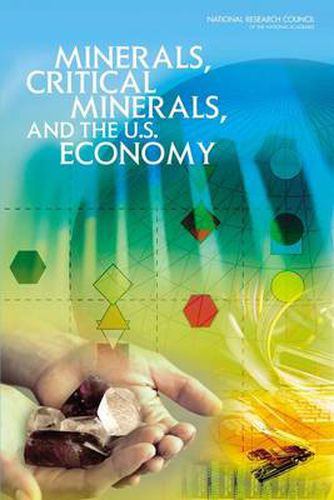Readings Newsletter
Become a Readings Member to make your shopping experience even easier.
Sign in or sign up for free!
You’re not far away from qualifying for FREE standard shipping within Australia
You’ve qualified for FREE standard shipping within Australia
The cart is loading…






Minerals are part of virtually every product we use. Common examples include copper used in electrical wiring and titanium used to make airplane frames and paint pigments. The Information Age has ushered in a number of new mineral uses in a number of products including cell phones (e.g., tantalum) and liquid crystal displays (e.g., indium). For some minerals, such as the platinum group metals used to make cataytic converters in cars, there is no substitute. If the supply of any given mineral were to become restricted, consumers and sectors of the U.S. economy could be significantly affected. Risks to minerals supplies can include a sudden increase in demand or the possibility that natural ores can be exhausted or become too difficult to extract.Minerals are more vulnerable to supply restrictions if they come from a limited number of mines, mining companies, or nations. Baseline information on minerals is currently collected at the federal level, but no established methodology has existed to identify potentially critical minerals. This book develops such a methodology and suggests an enhanced federal initiative to collect and analyze the additional data needed to support this type of tool.
$9.00 standard shipping within Australia
FREE standard shipping within Australia for orders over $100.00
Express & International shipping calculated at checkout
Minerals are part of virtually every product we use. Common examples include copper used in electrical wiring and titanium used to make airplane frames and paint pigments. The Information Age has ushered in a number of new mineral uses in a number of products including cell phones (e.g., tantalum) and liquid crystal displays (e.g., indium). For some minerals, such as the platinum group metals used to make cataytic converters in cars, there is no substitute. If the supply of any given mineral were to become restricted, consumers and sectors of the U.S. economy could be significantly affected. Risks to minerals supplies can include a sudden increase in demand or the possibility that natural ores can be exhausted or become too difficult to extract.Minerals are more vulnerable to supply restrictions if they come from a limited number of mines, mining companies, or nations. Baseline information on minerals is currently collected at the federal level, but no established methodology has existed to identify potentially critical minerals. This book develops such a methodology and suggests an enhanced federal initiative to collect and analyze the additional data needed to support this type of tool.